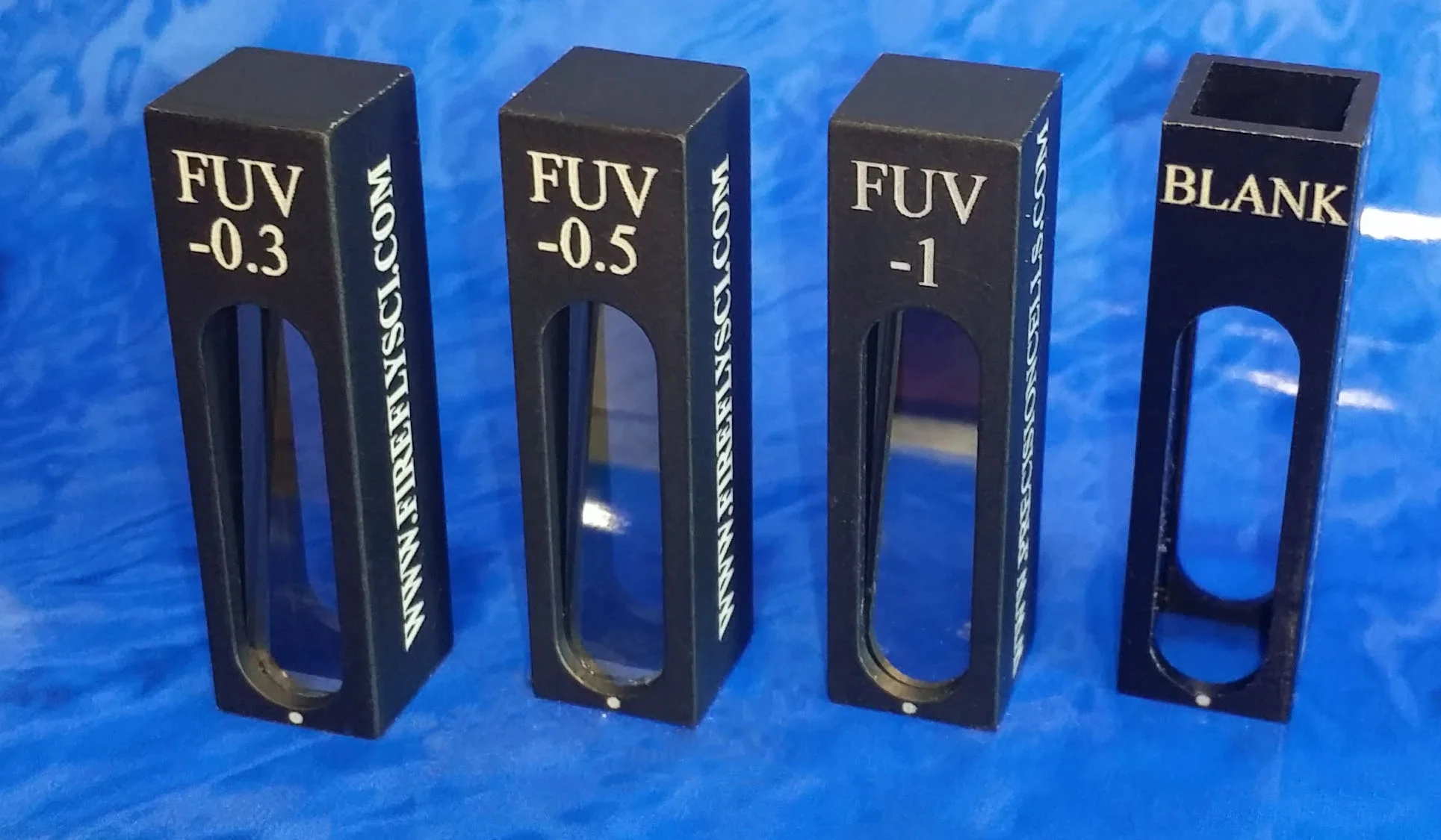What's the best Cuvette Cover for me?
/Hi all you FireflySci fans!
We're back again with a short article on how to choose the best type of closure for your cuvette. Sometimes it can be hard to figure out which cuvette top is best for your needs. It can be especially difficult when it comes to seeing the different prices for each type and properly weighing your options.
So here we go!
Cuvette PTFE Covers
Now this is the most basic type of cuvette cover and it also happens to be the least expensive. These covers come stock with most cuvettes. To find out if a cuvette you want comes with a cover or not, please check the cuvette description.
LDPE Plugs
Inverted 1UV10 Cuvette with LDPE plug
We actually carry two different types of covers. The first, is the more common PTFE covers. The other are LDPE plugs. These are mostly used for disposable cuvettes but they will also fit most 10 mm cuvettes. They are mostly meant for one time use since they get misshapen after being removed from a cuvette. This type of cover makes a decent seal so the cuvette will not leak when inverted. The LDPE covers have small ridges on the sides that allow this seal to be made, but as mentioned earlier, these ridges get deformed after one single use.
So a PTFE cover is certainly not air tight. Also it does not have the ridges like the disposable covers. So can you safely invert a filled cuvette with one? Well guess what, we tested it out for you!
Check out the video below:
Cuvette PTFE Stoppers
The next step up from a standard PTFE cover is a stopper top. These stoppers are great because they are really easy to seal off a cuvette and provide a close to airtight seal. To make this seal, we fuse a quartz or glass block on top of a standard 10 mm cuvette and then drill a hole into the block using a tapered bit. We give the taper a "rough" finish so when a stopper is inserted it makes a tight seal because of the small imperfections in the taper. Some customers have had to remove the stoppers with pliers because they fit so tightly!
FireflySci Standard PTFE Stopper
We have two PTFE stoppers for purchase. The standard type that comes with our stoppered cuvettes, and an advanced stopper.
We will be posting a video soon on the differences between our standard stopper and our advanced stoppers so check back for that.
For a quick overview of the benefits of the Advanced Stopper, please check out the article below: Basically, these stoppers are equivalent with screw caps as far as sealing power goes, but are available at a fraction of the cost. They can also make an airtight seal after each use without having to be replaced.
https://www.fireflysci.com/news/2017/7/18/advanced-ptfe-stopper-now-available
Cuvette Glass/Quartz Caps
Now in all honesty the quartz and glass caps are not all that popular, but they had to make an appearance here since we do have them.
Basically, these caps seal exactly the same as our stoppers but they are made from glass or quartz depending on which type of cuvette you choose.
Choosing a glass or quartz cap does give you the option to add attachments to the tops of the caps. I remember one customer had us add a small round "penny head" to the cap so it would be easier for them to grip.
Cuvette Screw Caps
FireflySci Screw Cap Threads
These caps are excellent for experiments that require an airtight seal. The threading on top of the quartz/glass cuvette makes an ultra tight seal and it the best sealing option available for cuvettes. The PTFE/SIlicon Septa is torqued down to create a re-sealable and chemical resistant seal.
Our screw cap cuvettes have become very popular with customers who do anaerobic work. The Septa Caps allow you the benefit of being able to inject a sample into the cuvette and still keep the airtight seal.
The drawback of this type of seal is that the PTFE/Silicon disks that are in the caps wear out after a few uses and need to be replaced. Since PTFE is a rather rigid material, the PTFE layer becomes "indented" after use and only have limited uses. So our advice is that if you plan on doing anaerobic work with our screw cap cuvettes is to make sure you buy additional septa.
This concludes our cuvette closure roundup. If you have any questions about any of these sealing methods we would be happy to answer them for you. You can either post in the comments section below are send us an e-mail, info@fireflysci.com.
Here's to your success!
The FireflySci Team
![firefly_logo_FINAL [Black].jpg](https://images.squarespace-cdn.com/content/v1/5411d5c0e4b02e1c8b27565a/1434491508803-XB4OF7YDY46Z72L5U5AP/firefly_logo_FINAL+%5BBlack%5D.jpg)









